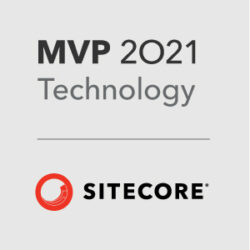I know it has been a while, Vacationing and launch has been no joke on my side. 🙂
It has surely taken a toll and kept me away from blogging for quite a few days. Finally, today I got some time to jot down the experiences of my launch after a pause.
Time Taken: 14 hrs straight starting 5.00 PM to Mid night around 2.00 AM PST, it was a grueling long night and I was supporting the go-live from India, how fun!
Sadly, I did not expect any issues or what so ever because we had code already up and running on the actual servers with all the things working and QA/UAT pass. The only thing that was changing was DNS and binding being different, rest everything was absolutely same. Well, everything does not happen as planned especially on the launch day. I was supporting using a fairly fast internet for Indian standards, but, still fell a little short as I was used to things being done fast.
Below are few hiccups and how we resolved each of these, hope it helps some one who is stuck in a similar situation.
- xDB Cloud working excellent on sandbox license, but, lot of issues when swapped to prod license. While launching the site, we obviously have to swap the connection strings to use production xDB license provided by sitecore. We did so, but, as a surprise we encountered bunch of errors on logs and had to re-visit all the related configs to ensure we did everything as expected. Sitecore did not mention in support ticket that extra steps would be needed on live license which are additional as compared to non-prod xDB license. We followed the below blog and added host file entry as mentioned and left hostname empty on configuration. https://sitecorehacker.com/2017/02/12/sitecore-analytics-tracker-common-issues-and-how-to-resolve-them/
- IIS security hardening done prior to enabling anonymous access to the site. It is kind of common practice that when we have a pre-prod or staging site behind some kind of authentication to ensure site is not publicly available since it is meant to be. As part of deployment strategy, we had steps listed and unfortunately they were ordered incorrectly. Since, enabling anonymous on parent site would trigger that change to all children and folders within the site, the hardening we had done per sitecore recommendations on CD servers was lost and we had to re-do the steps. These things add time post launch especially on VPN, connected to remote servers from INDIA. lol
- Coveo cache – Still unsure what was causing Coveo to access a URL that is no longer configured on either Server URL or for that matter any where else. While rebuilding master index, it kept failing saying that could not reach to a binding which is no longer available. I am assuming it is some kind of cache, unsure where or what at this time. I ensured there was no trace of old/outdated URL any where by going to /showconfig.aspx and also reviewing coveo configuration files. Still a mystery to solve, but fortunately the error did not mean indexes were not built, so, we were safe to move forward and were successfully able to rebuild other web and liveweb indexes with out errors.
- Cache – It is a boon and blessing. We had set up cache on all renderings applicable. But, there was a slight miss. Parent placeholders that carried WFFM should not be allowed to cache, but, there were few misses which were uncovered only on regression testing that few forms were not working, once we removed cacheable setting on these renderings forms started working like a charm.
- Errors on Log files – It is important to monitor log files to check for any major errors on the logs that clutter the server and could have slow response times. We un-covered a few and still in progress on identifying all the outstanding issues.
- Redirects – On our lower environments we had few different settings like www was being forced as it was not needed which was enabled post launch as a requirement. This started throwing off the logic and plan around redirects. We had to revamp the redirects loaded to ensure they are working alright and corrected few instances. Especially when migrating or unifying multiple sites this could pose a challenge. How I wish we had exact same settings and tested the logic against that to reduce this back and forth.
